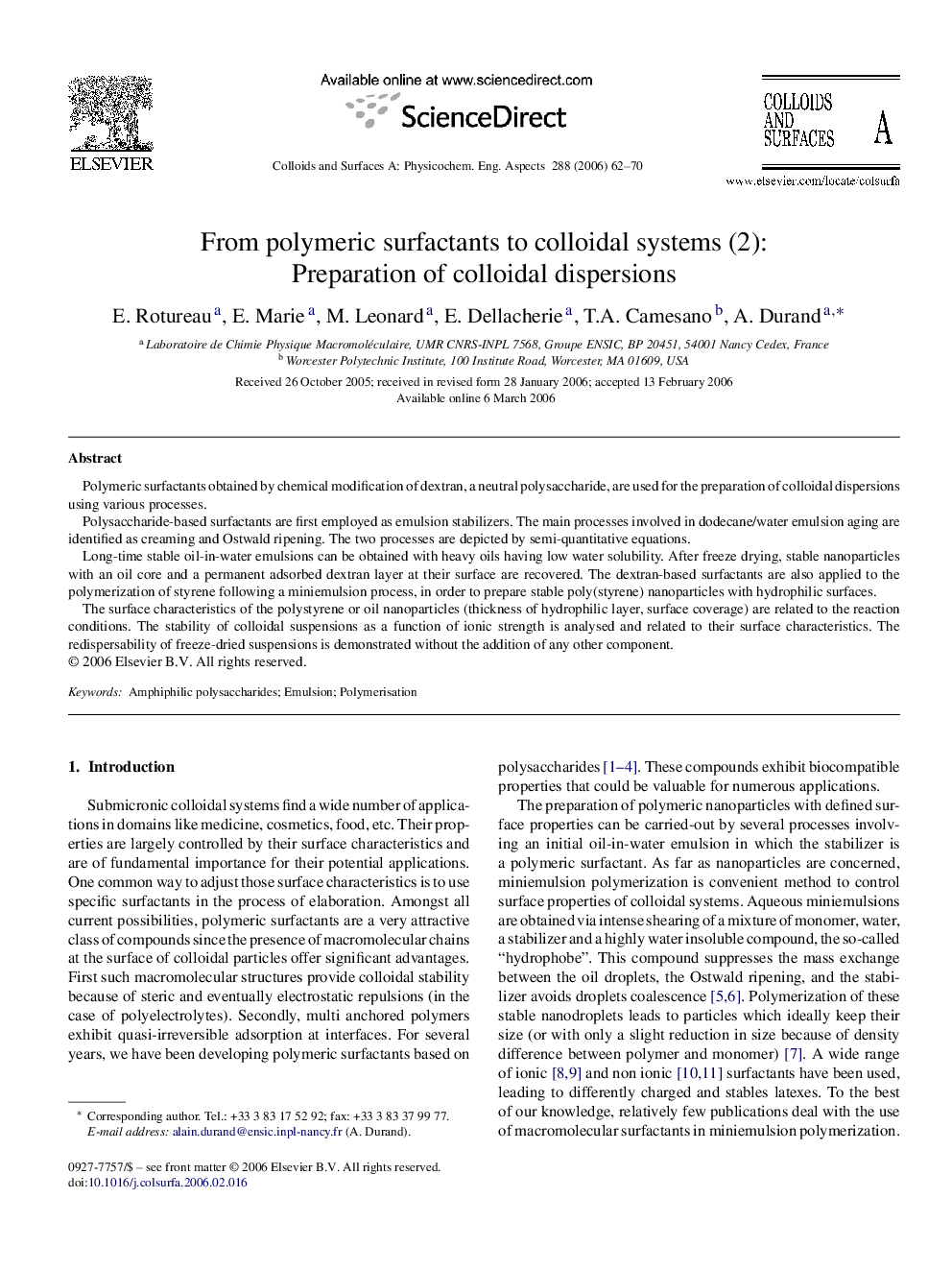| Article ID | Journal | Published Year | Pages | File Type |
|---|---|---|---|---|
| 598105 | Colloids and Surfaces A: Physicochemical and Engineering Aspects | 2006 | 9 Pages |
Polymeric surfactants obtained by chemical modification of dextran, a neutral polysaccharide, are used for the preparation of colloidal dispersions using various processes.Polysaccharide-based surfactants are first employed as emulsion stabilizers. The main processes involved in dodecane/water emulsion aging are identified as creaming and Ostwald ripening. The two processes are depicted by semi-quantitative equations.Long-time stable oil-in-water emulsions can be obtained with heavy oils having low water solubility. After freeze drying, stable nanoparticles with an oil core and a permanent adsorbed dextran layer at their surface are recovered. The dextran-based surfactants are also applied to the polymerization of styrene following a miniemulsion process, in order to prepare stable poly(styrene) nanoparticles with hydrophilic surfaces.The surface characteristics of the polystyrene or oil nanoparticles (thickness of hydrophilic layer, surface coverage) are related to the reaction conditions. The stability of colloidal suspensions as a function of ionic strength is analysed and related to their surface characteristics. The redispersability of freeze-dried suspensions is demonstrated without the addition of any other component.
